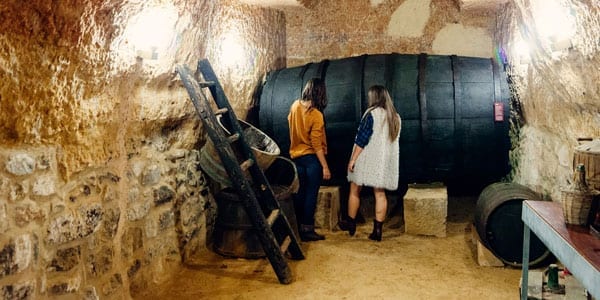
Writes: Mónica Uriel - Journalist
The Cigales wine route
La Cigales wine route, riding a Valladolid, allows you to feel centenary vineyards. Also visit XNUMXth century winery neighborhoods where each family made claret. It is now bottled as a rosé. Likewise, it invites you to enter the 'Wine Cathedral' that gives an account of the apogee that the region lived.
Also visit honey hives, which together with the woman and the cat must have been Cerrato. According to a saying of the area, where almost all the towns had apiaries.
In the XNUMXth century it had the moment of greatest heyday of Cigales and its region thanks to the wine, there were 400 inhabitants and 350 wineries. Some of these, which formed entire neighborhoods in which each family had their winery, have been recovered.
Now they can be visited, like those of Mucient, where there were more than 200 underground cellars. Currently about twenty families continue to do claret for private use.
The construction of the wineries was by hand: the clay was excavated and it was thrown over the street creating mounds. These became Thermal insulation and prevented the rain from entering inside. In a recovered winery you can see the you make, underground, as it was in the sixteenth century, and the cooker. What is now called reception room and receives the grapes from the outside through the stall.
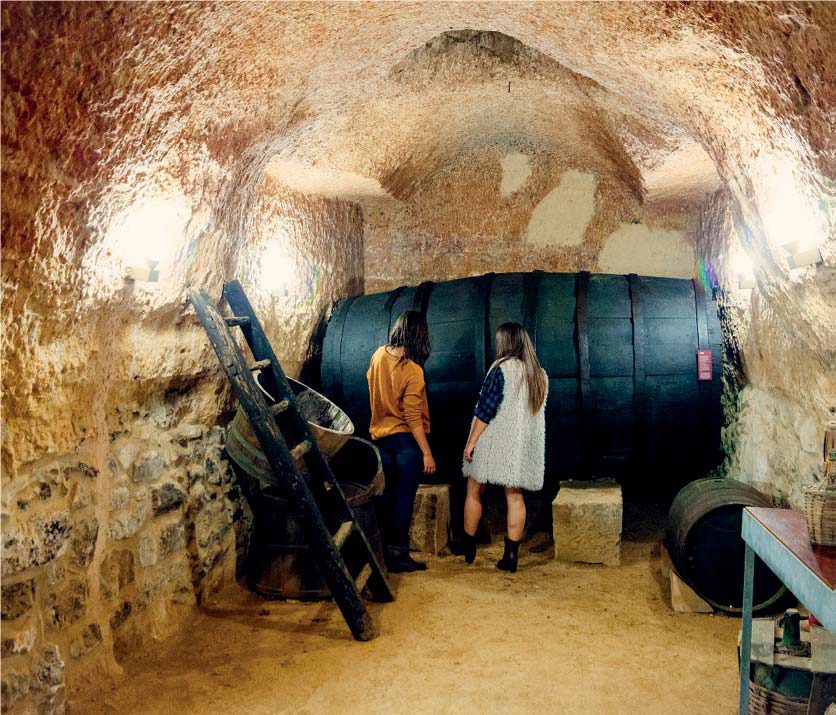
The making of claret
La grape, of which up to 4.000 kilos could be stored, ferments here naturally. Due to the weight of some bunches on others, the must comes out and, by gravity, flows through a hole. This is the way to do the claret, which ferments the must with the grape because the temperature rises naturally. While in the pinkish only the clean wort ferments.
The problem of natural fermentation is that it is created carbon dioxide and lack of oxygen. What produced the so-called 'sweet death'. To avoid this, one entered the cellar with a candle - if it goes out, it means there is no oxygen - or with a dog, who warns before, not wanting to enter.

El pressing system is the same as the cider, with a beam called a Roman press. The whole bunch is intertwined and the bunch of grapes is compact. A pile houses the must from the crushing process and with what is left over it is made pomace. In Cigales You can also visit an underground winery, the 'Traditional Cigaleña Winery', which belonged to Maria Luisa Centeno. Wine was made there without interruption from 1580 to 2008.
Good grape and fermentation
To elaborate here a wine quality, the most important thing is to have a good grape. Since if this is bad in fermentation, being natural, it cannot be improved. Fermentation takes place at constant temperature and humidity. Every day of the year in the wineries there is around 12ºC and 70% humidity.
The beam of this press measures 18 meters and with 14.000 kilos of grapes 4.000 liters of must were made. Later they went to cement tanks, which were later cleaned by children.
The red wines they cleaned themselves with animal blood, which carries away impurities. The blancos with gypsum, kaolin (very fine clay), or egg white, which is neutral but is more expensive. In fact, many winemakers kept chickens. The leftover yolks were given away to convents to make sweets.
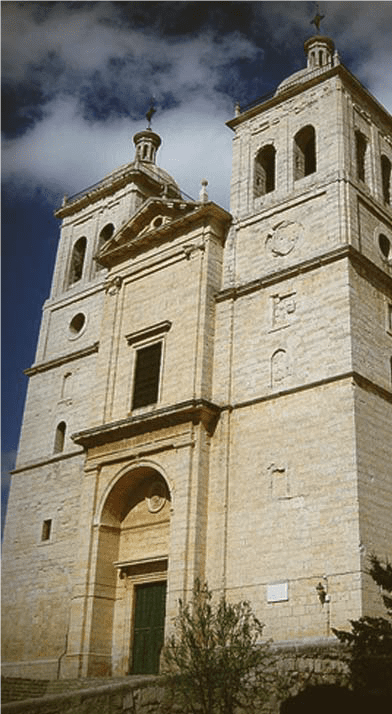
The orders of the Cistercian and La Trappe brought the wine to Cigales from France
La church of Santiago Apostol de Cigales It is known as the 'Cathedral of Wine'. Since it was paid precisely with wine, whose construction began in 1535. In addition to being the economic engine of the region, wine, is the second most repeated word in the Bible after God. Work on the church was interrupted in 1772 as the economy collapsed. That when the capital of Valladolid to Madrid.
The church could be finished later thanks to a patron, Fra Antonio Mayor. He was appointed bishop of Guadalajara Mexico) from where he sent gold and silver to Cigales. The last weekend of September is a good time to visit Cigales. The grape harvest festival is celebrated, the oldest in Castilla y León
Of the Cistercian order is the monastery Our Lady of Palazuelos, from the thirteenth century, which is also within the Wine Route. After being a parish until the 60s, it now welcomes wine and cheese tastings, classical music concerts and fashion shows.
From here you can start a route by bike or horseback by Castile Canal, surrounded by flour factories. Many wineries used the canal to transport wood and barrels. He was at full capacity for only 10 years, as he received the competition from railway.
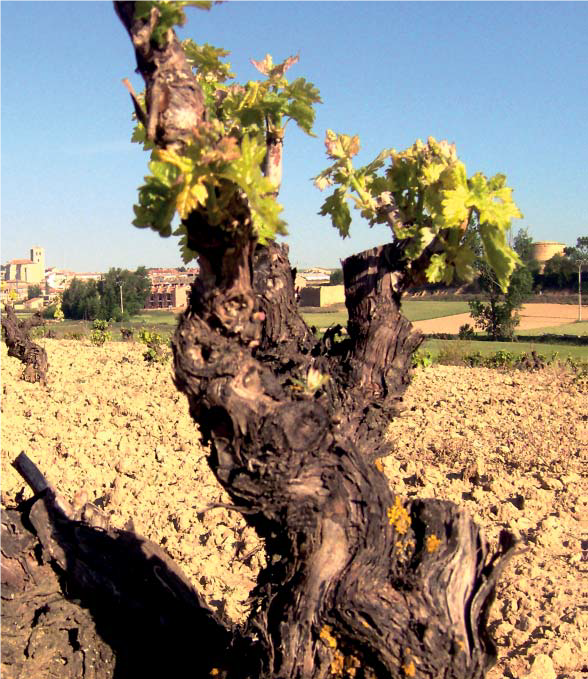
White and red varieties were mixed in the vineyards
El claret is a wine that has always been done in Cigales. In reality, it begins to be made in the field, because in the vineyards there are mixed the white grapes and the red ones. All the clarets made today are bottled as pinkish, since it is what the regulations mark.
The difference with pink, very precious in the DO Cigales, is that this is made like a white wine from red grapes. The claret, like a red wine since the red and white grapes already enter the winery mixed. The color and grade is given by the ink. White subtracts color and adds acidity. The best wine to have a lamb is a claret or pinkish. With a red wine, digestion is heavier, say experts in the area.
Ignacio Príncipe is the owner of Bodegas César Príncipe. His family had an underground cellar and he moved it to its current location in Fuensaldana. He called one of his wines Moon Claret, in defense of the reviled broth.
“The rosés are more technological than the reds. The color process is complicated, although they are cheaper and long-drink wines "
He opened the new winery with red Cesar Principe. In its vineyards, open to visits, you can check the characteristics of Cigales. Its centuries-old vineyards in which the variety predominates Tempranillo.
The harvest is still manual, since the machines cannot be used. Unlike the pinks of Navarre, where the wines are usually monovarietal, in Cigales, not. The mixing here is made in the field. Nearby is the castle of Fuensaldaña, from the XNUMXth century, which offers dramatized visits.
The underground cellars are always at 15ºC
Some of the wineries and caves in the area were also houses, in which mainly day laborers lived, such as those of Owners, where there were 150. Today you can visit one through the Association of Cellars and Caves of Dueñas.
This houses, at 15º C all year and without running water, they had stables for livestock and are now used as picnic. Owners is known for its Trapa chocolate factory, which received the recipe from the Trappist monks. They began to do it in 1891 in the monastery of the XNUMXth century that is located directly opposite.
Behind the monastery there are lands that came to have the right of vineyards where the monks currently cultivate cereal and produce milk from cows. En Holy Week, long lines of people form at the entrance of the Trapa factory. In their store they sell dark chocolate bonbons filled with berries and apple cream.
Back to the wine, there is the Cooperativa de Cigales Winery. This is the largest of the DO Cigales. Wine has been made - 1,5 million bottles a year - since 1956, the year from which its cement deposits date. They foresee a lot of demand for this year, since the drought has not affected this area. From here has come the recognized in various competitions such as BEST wine pink of the world: Torondos.
Place of rosés and exquisite lamb meat
En Bodegas Council, in ValoriaThey make a particular rosé, as it is fermented in the barrel. Is he Fermented Rosé Carredueñas in barrel 2016, which obtained the gold medal in Brussels.
He has also been recognized with the great gold medal for his Crazy Donkey. Your owner, Enrique Council, offers in the restaurant of Hotel Council Hospice their wines. The menu is based on lamb meat, made with local honey, in addition to cheese or chocolate of blood sausage.
The building is an old castle of the Order of Calatrava. It was later converted into a palace that the ancestors of Enrique they bought and he rehabilitated.
In 2016 the hotel was distinguished as the best wine tourism accommodation on the Wine Routes. Formerly the merchants slept in inns like this one, located in the ravine Valladolid-Burgos. While the shepherds spent the night in huts.
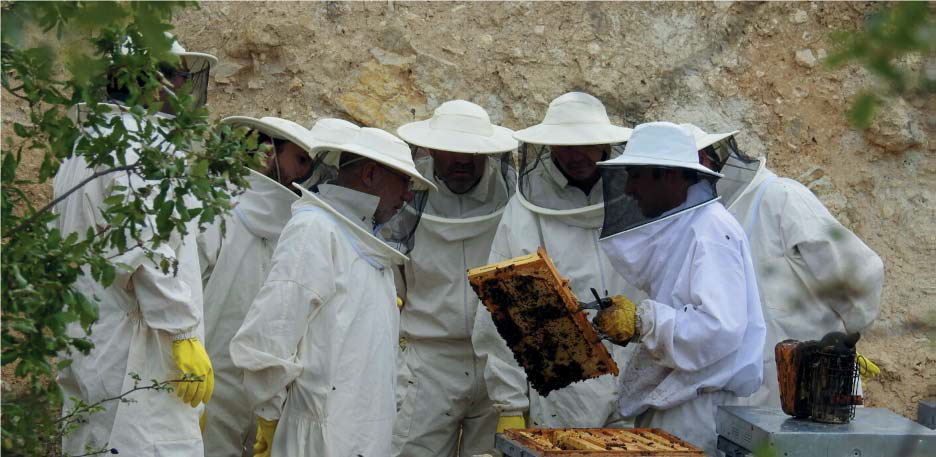
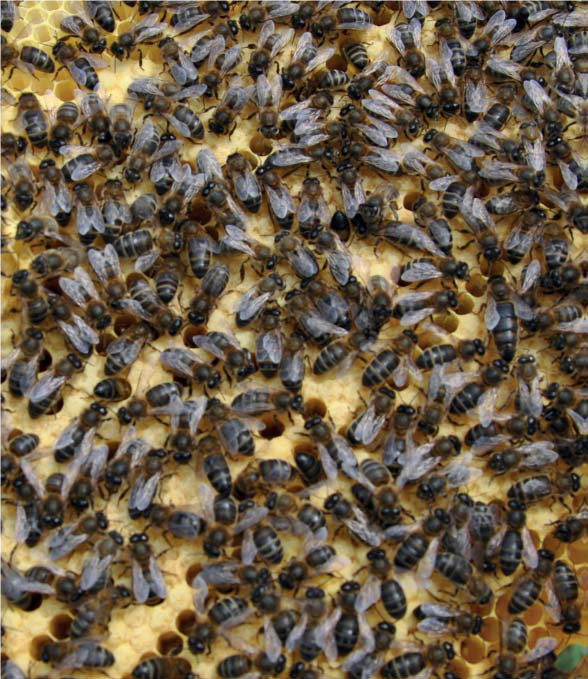
Beekeeper for a day
Precisely in the huts, a particular heritage of the Cerrato, are the honey combs that allow the visitor to become beekeeper for a day. This area has an important honey culture and in the past each town had a dozen apiaries.
In fact, Spain is the largest producer of honey in the European Union (EU). Although very few Spanish beekeepers pack it with their brand.
Miguel Rodríguez created here in 2012 the honey Montes de Valvení with six hives and now they already have 600. Perfectly protected with the beekeeper, the visitor discovers in an environment full of thyme, sage, lavender and rosemary, the inside of a beehive.
And also the interesting bees life in his month and a half of life, as well as the 'Games of Thrones' and the 'Coups d'état' that are created. At the end of the visit, a tasting of various types of honey that, like the wines or oils, first they smell. Its color will depend on the flower that the bee has visited. The lightest are the sweetest and of the earliest harvest.
Valvení Mountains has honey from the forest, which does not come from flower nectar but from holm oak sweating. Is the honey Milflores, that of the earth and that will soon be called Cerrato flowers. As well as the lavender one, for which they move a hundred hives to lavender fields of Tordesillas. These last two have been distinguished by Honey Addicts.






